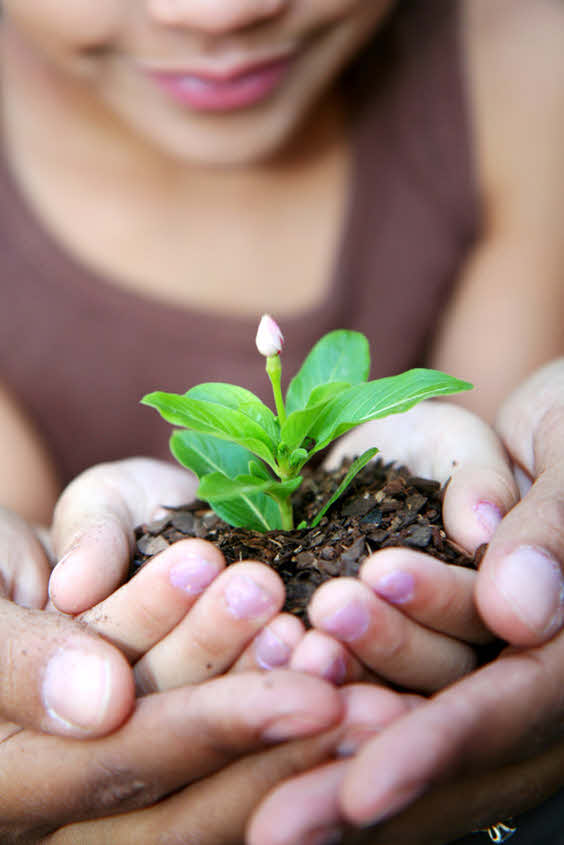by Priya Gopal
[box]Navarasas | The nine emotions play a very important role in our lives, particularly children. It is therefore important for parents and teachers to help kids identify what they are feeling and why they are feeling so, opines Priya Gopal. This helps them grow up into emotionally-strong and confident individuals, she reasons. Read on.[/box]“I don’t want to be at the mercy of my emotions. I want to use them, to enjoy them, and to dominate them.”
― Oscar Wilde, the Picture of Dorian Gray
What’s a human being without emotions? Emotions are present in every living minute of our lives. They rule the roost in our waking hours. They manipulate our dreams. They help us express ourselves, in the process, aiding us to understand and interact with the world. The navarasas, I believe, are emotions inherent in every living being, playing a major role in our lives every day. The mind of a child is an exciting canvas for emotions. Children go through different emotions, at times, without knowing what it is they are feeling. As adults, parents and teachers have a great responsibility in helping children identify what they are feeling and why they are feeling so. The ability to identify emotions helps in developing an emotionally-strong and confident individual.
As far as children are concerned, emotions start early in life. The emotional state of a pregnant woman’s mind is believed to have far-reaching effects on the development of the baby in the womb. It’s not uncommon for elderly women in the family to advise young, pregnant women to keep themselves in a happy state of mind. ‘A happy mother, a healthy child’ is something most gynaecologists would tell expectant mothers too.
The Emotional Spectrum of a Child
 A child is born an emotional being. He comes into this world demanding not just physical attention, but also emotional care. Babies react to emotions and go through emotions themselves. Research has shown that infants less than three months old feel at least five different types of emotions: joy (Hāsyam), anger (Raudram), sadness ( Kāruṇyam), disgust ( Bībhatsam) and wonder (Adbhutam). Infants use these emotions to link themselves with the outside world. They relate to people and things using these feelings.
A child is born an emotional being. He comes into this world demanding not just physical attention, but also emotional care. Babies react to emotions and go through emotions themselves. Research has shown that infants less than three months old feel at least five different types of emotions: joy (Hāsyam), anger (Raudram), sadness ( Kāruṇyam), disgust ( Bībhatsam) and wonder (Adbhutam). Infants use these emotions to link themselves with the outside world. They relate to people and things using these feelings.
Babies as young as three months have their favourite toys. I remember when my husband bought a little toy puppy for my four-month-old daughter, she looked at it with her wonder-filled, large, twinkling eyes. The pup barked and she screamed with joy. But the moment it flipped over, it scared her so much, the look in her eyes spoke of the disgust she felt for it. The pup retreated to the showcase and never came out till the day we gave it to someone.
Right from infancy, children go through the process of developing trust. Kids have very clear ideas in their minds as to whom they can trust and whom they cannot. That is why a one-year-old cries when a distant uncle tries to cuddle him. Distant uncle is definitely a stranger in the child’s mind. This is Bhayānakam (fear) that develops out of mistrust.
As kids grow older, they use their emotions to tell us what they want and what they don’t want. The terrible-twos are called so because at this stage, children are actually discovering the emotions they are capable of displaying. Throwing tantrums, screaming, shouting – the habits of the terrible-twos are a result of their process of self-discovery. They suddenly realise that they have so many different kinds of emotions in them. This is the stage when they get more control over their own lives. Support your child in his endeavour to attain this independence and feel the pride. Little things like using building blocks to create structures give the child a sense of achievement and independence. Let him learn to put on his shoes on his own. He may take time, but the wait is worth it. These small achievements nurture in him the feeling of Vīram (heroism).
As they grow older, they become curious. They ask questions and want to know the answers. The world around them is Adbhutam (wonder). Every day teaches them something new. They become seekers of information, especially of their immediate surroundings. As parents we need to encourage them to explore, treat their questions seriously and answer them sincerely. The more kids explore, the more confident they become of themselves. This is because their curiosity is being fulfilled. This generates a sense of satisfaction in them.
Right from the age of two, children learn anger and frustration – particularly when their demands are not met. These demands could be physical or emotional. The fact that you didn’t buy a toy for them or that a teacher chided them for an incorrect answer rouses these emotions. It is at these times that we need to teach them how to identify what they are feeling and why. Most of us usually share the positive emotions. When your child has won a race, you tell him how happy you are; discuss how happy he is and generally how happy and proud the entire family is about him. But when it comes to anger or frustration, we often chide the kid and close it with a ‘Grow up!’ But isn’t that exactly what he is doing? He is growing up; finding it confusing and we don’t seem to be aiding him in that.
Negative Emotions: The Role of a Parent
When the child is angry, irritated or frustrated, discuss why he is feeling so. Let him talk about these feelings. Only then will he learn to handle them too. Children go through all the emotions that we adults go through. However, the way they express it is very different. They don’t exactly know how to express their emotions and hence turn to displaying it at a physical level. A child throwing a tantrum at a mall may not necessarily be misbehaving. He may just be trying to communicate something to the adult who has failed to understand. He, therefore, expresses his emotion by physically throwing himself on the ground.
The most influential gift a parent can give the child is the freedom to express his emotions to him. When the child is comfortable expressing what he feels, he is more in control of himself. And when he is in control of himself, he knows how to handle his emotions. He may be angry, irritated, happy, ecstatic or sad, but when he expresses himself, he is not confused about what he is feeling. It is highly critical for parents to aid in the emotional development of the child.
Discuss emotions with your child. While reading out books to them, show them pictures of the main characters. Discuss what feelings the character may be going through. Ask them, for instance, “How do you think Snow White is feeling? Is she scared? Is she happy?” Make small moments of life your teaching moments. Discuss how your little fellow got irritated when he had to share his chocolate with his sibling. Let him say why he didn’t want to share it. He just may have a logical argument that may not go with your lofty ideals of sharing and caring. But when he refuses to share because of hurt or anger, point out the emotion to him. If he tells you, “I am angry with my brother. He refused to give me his toy to play. Why should I share my chocolate with him?” he is connecting to the anger within him. Tell him, “I know you feel angry. Let’s talk to your brother too and see if both of you can share your stuff.” This way you teach him that his anger is not directed against his brother but against his unwillingness to share his stuff.
Play games like Simon says. Simon could ask them to be happy, sad, angry, brave, curious, thankful, loving, scary etc….cover as many emotions as possible. Soon your child will know the subtle differences between each one. He will begin to acknowledge these within him and outside of him.
Handling the Emotional Teenager
As your child is growing up, he goes through a number of issues: peer pressure, exam stress, rising expectations of the adults around him and conflicting viewpoints on almost everything. By the time kids reach their teenage, most parents are at loggerheads with them. Loud music and louder voices usually demarcate a house with a teenager. This predictable scenario could be averted and avoided with a little care from the side of the adult. Teens grow to experience emotions that are new and thus confusing once again. His heart wants to write a letter to the pretty girl in his class, but his mind tells him that he should be completing his journal. His heart is on winning the next level in a video game, while his mind wants him to practise the piano. This tussle between the heart and the mind within, releases a good amount of frustrating energy which at times get personified with vigorous physical reactions, swear words and the building of a ‘no one can tell me what to do ‘ attitude. A child who is able to identify the emotions that he is experiencing, grows into a teenager who may not be as confused as those we generally find around us.
This stage can be a peaceful sail through if the adult is capable of helping the child handle the emotional upheaval he is going through. The question at this stage is not what the child is feeling. Frustration arises from the fact that he doesn’t figure out why he is feeling thus. Most children go through adolescence without realising why they are feeling what they are. This makes them grow into adults who are equally confused about what is happening.
Encourage your son or daughter to speak to you. Try to get a parenting moment in the day when you can just hear what your child wants to say. If your child is not very communicative, encourage him to write a diary of what he feels. The attempt to verbalise his emotions will give him the ability to look at what he is going through with a different perspective. As he reads what he has written, he will question himself about why he feels so. This exercise will give him the required privacy to handle his own emotions. It will also aid him in his journey of self discovery.
The trick to managing a turbulent teenager is to manage your own emotions. ‘Keep cool while you school’ should be your mantra. If you get agitated for every little thing that the teen does, do not expect him to be paragon of peace. Help yourself maintain your peace of mind. Always find a different perspective. Look at the situation as your teen would. Try to remember the time you were a teen. How did you feel? Once you hit the connect button with your teenager, the turbulent years could turn into terrific years.
A little bit of encouragement, a little bit of patience, a little bit of caring and a little bit of sharing through their years of growing up, will ensure the navarasas paint a pretty picture on the canvas of your child’s life.
Priya Gopal is the Section Head (CBSE) at the Curriculum Department of Kangaroo Kids Education Ltd., Mumbai. An educator by choice, teaching and interacting with kids is something that has enthused her over the last 16 years. Priya lives in Mumbai with her husband and two children. She blogs at http://keepsmilinginlife.blogspot.com
[facebook] [/facebook] [retweet]Tweet[/retweet]






Nice Article… emotions in a child has been explained very nicely.